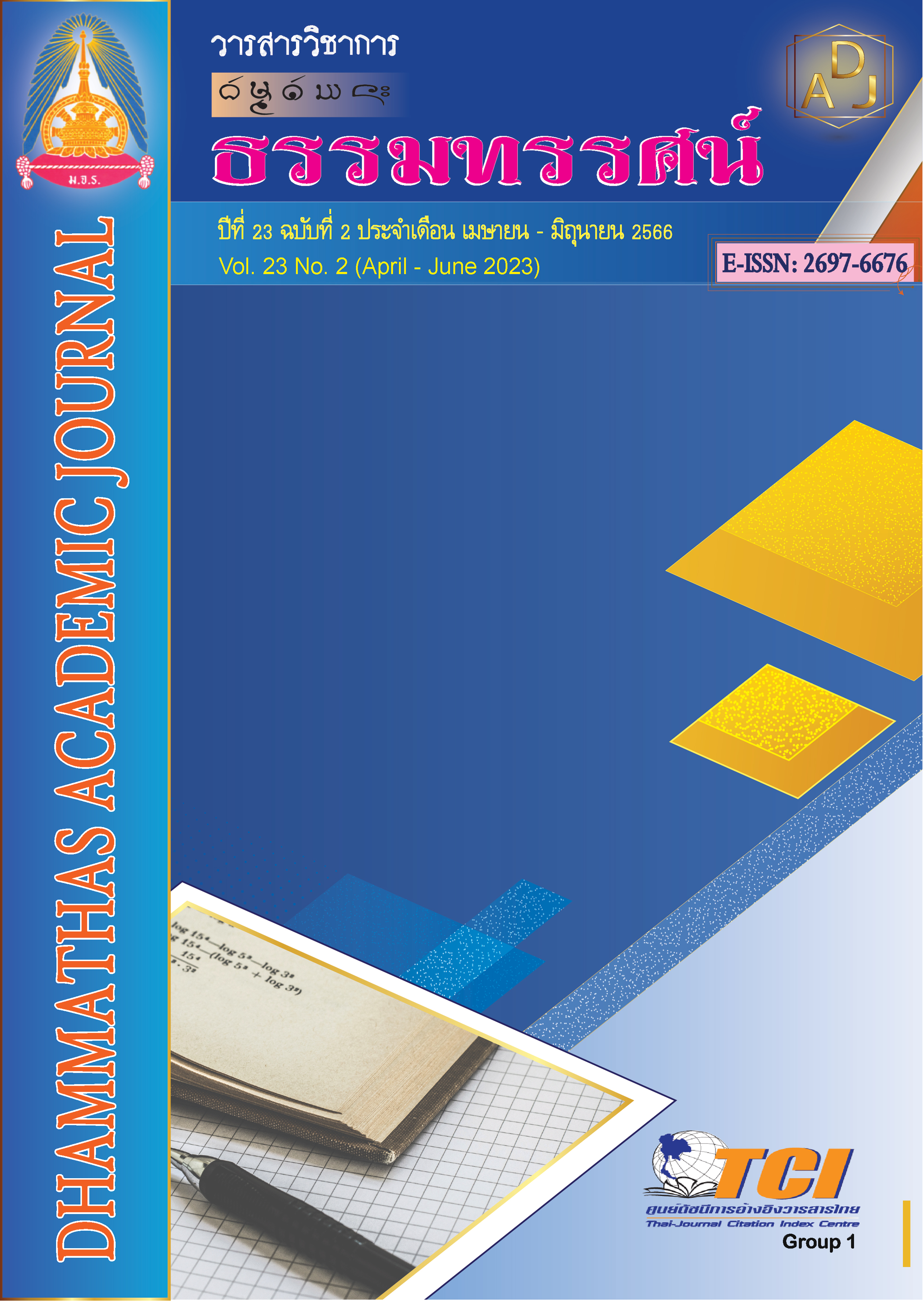Learning Organization Model of Private Schools under the Office of Education Region 12
Main Article Content
Abstract
The objectives of the research were; 1) to study the current situations, desired situations and the needs of the learning organization model of private schools under The Office of Education Region 1, 2) to development of the learning organization model of private schools as mentioned, and 3) to evaluate the learning organization model of private schools as mentioned. The samples totally 539 in number and 30 experts to evaluate the learning organization model. The research instrument for collecting the data was the questionnaire with reliability at 0.92and0.91, relating to the current and desirable situations, respectively. Statistics used in data analysis were percentage, mean, standard deviation, and modified priority needs index (PNImodified).
The results of research were found that:
1. The current situation of the learning organization model of private schools under The Office of Education Region 12, as a whole was found to be at a moderate level. The item that was found to stand on top of the scale was systematic thinking, followed by learning dynamics, team-based learning, aiming for excellence and creativity, respectively. The desired situationwas in an overall aspect, found to prevail at the highest level. The item that was found to stand on top of the scale was team-based learning, followed by aiming for excellence, learning dynamics, creativity and systematic thinking, respectively. The needs were, in an overall dimension, found that the most desirable aspect was creativity, followed by team-based learning, aiming for excellence, learning dynamics and systematic thinking, respectively.
2. The development results of the learning organization model of private schools as mentioned were elements of the model as follows: name of the model, objectives, principles, and 5 main factors: 1) creativity, 2) team-based learning, 3) aiming for excellence, 4) learning dynamics and, 5) systematic thinking.
3. The results of the assessment of the model found that the model was appropriate, possibility and usefulness at the highest level.
Article Details

This work is licensed under a Creative Commons Attribution-NonCommercial-NoDerivatives 4.0 International License.
เพื่อให้เป็นไปตามกฎหมายลิขสิทธิ์ ผู้นิพนธ์ทุกท่านต้องลงลายมือชื่อในแบบฟอร์มใบมอบลิขสิทธิ์บทความ ให้แก่วารสารฯ พร้อมกับบทความต้นฉบับที่ได้แก้ไขครั้งสุดท้าย นอกจากนี้ ผู้นิพนธ์ทุกท่านต้องยืนยันว่าบทความ ต้นฉบับที่ส่งมาตีพิมพ์นั้น ได้ส่งมาตีพิมพ์เฉพาะในวารสาร วิชาการธรรม ทรรศน์ เพียงแห่งเดียวเท่านั้น หากมีการใช้ ภาพหรือตารางของผู้นิพนธ์อื่นที่ปรากฏในสิ่งตีพิมพ์อื่นมาแล้ว ผู้นิพนธ์ต้องขออนุญาตเจ้าของลิขสิทธิ์ก่อน พร้อมทั้ง แสดงหนังสือที่ได้รับการยินยอมต่อบรรณาธิการ ก่อนที่บทความจะได้รับการตีพิมพ์References
จิราภรณ์ ผันสว่าง. (2562). ผู้นำกับการเป็นนักบริหารการศึกษามืออาชีพ. มหาสารคาม: มหาวิทยาลัยราชภัฎมหาสารคาม.
ธวัชชัย รัตตัญญู. (2551). การพัฒนารูปแบบการบริหารโดยใช้โรงเรียนเป็นฐานในโรงเรียน สังกัดองค์กรปกครองส่วนท้องถิ่น. (วิทยานิพนธ์ปรัชญาดุษฎีบัณฑิต). กรุงเทพฯ: มหาวิทยาลัยสยาม.
ธีรพันธ์ เชิญรัมย์, ประเทือง ภูมิภัทราคม และวรกฤต เถื่อนช้าง. (2565). รูปแบบองค์การแห่งการเรียนรู้ของมหาวิทยาลัยมหาจุฬาลงกรณราชวิทยาลัย. วารสารวิจยวิชาการ, 5(2), 183-196.
รุ่งรัชดาพร เวหะชาติ. (2548). การพัฒนารูปแบบการบริหารคุณภาพทั้งองค์การของสถานศึกษาขั้นพื้นฐาน. (วิทยานิพนธ์การศึกษาดุษฎีบัณฑิต). ชลบุรี: มหาวิทยาลัยบูรพา.
ศิริพร โงนสาย. (2552). ปัจจัยบรรยากาศโรงเรียนกับองค์การแห่งการเรียนรู้ที่ส่งผลต่อประสิทธิผลของโรงเรียน สังกัดสำนักงานเขตพื้นที่การศึกษาสระแก้ว. (วิทยานิพนธ์ศึกษาศาสตรมหาบัณฑิต). ชลบุรี: มหาวิทยาลัยบูรพา.
สำนักงานคณะกรรมการการศึกษาขั้นพื้นฐาน. (2549). คู่มือการบริหารงานสถานศึกษาขั้นพื้นฐานที่เป็นนิติบุคคล. กรุงเทพฯ: คุรุสภาลาดพร้าว.
เอกราช โฆษิตพิมานเวช. (2562). ความต้องการจำเป็นของผู้ปกครองในการจัดการศึกษาขั้นพื้นฐาน โรงเรียนเอกศึกษาขอนแก่น สังกัดสำนักงานศึกษาธิการจังหวัดขอนแก่น ประจำปีงบประมาณ 2562. ขอนแก่น: สังกัดสำนักงานศึกษาธิการจังหวัดขอนแก่น.
เอกราช โฆษิตพิมานเวช. (2564). ความต้องการของผู้ปกครองในการจัดการศึกษาขั้นพื้นฐาน โรงเรียนเอกศึกษาขอนแก่น. วารสารวิชาการธรรมทรรศน์, 21(2), 41-50.
Garvin, D. A. (2000). Building a Learning Organization. Harvard Business Review, 71(4), 78-91.
Gephart, M. A., et al. (1996). Learning Organizations Come Alive. Training and Development, 50(12), 34-44.
Keeves, P. J. (1988). Educational research, Methodology and measurement: An international handbook. Oxford: Pergamon Press.
Lussier, R. N. (2001). Leadership: Theory Application, Skill Development. Ohio: South Western College.
Marquardt, M. J. (2002). Building the Learning Organization. New York: McGraw-Hill.
Senge, M. (1990). The Fifth Discipline: the Art & Practice of the Learning Organization. London: Century Business.
Yamane, T. (1973). Statistics: An Introductory Analysis. New York: Harper & Row.

